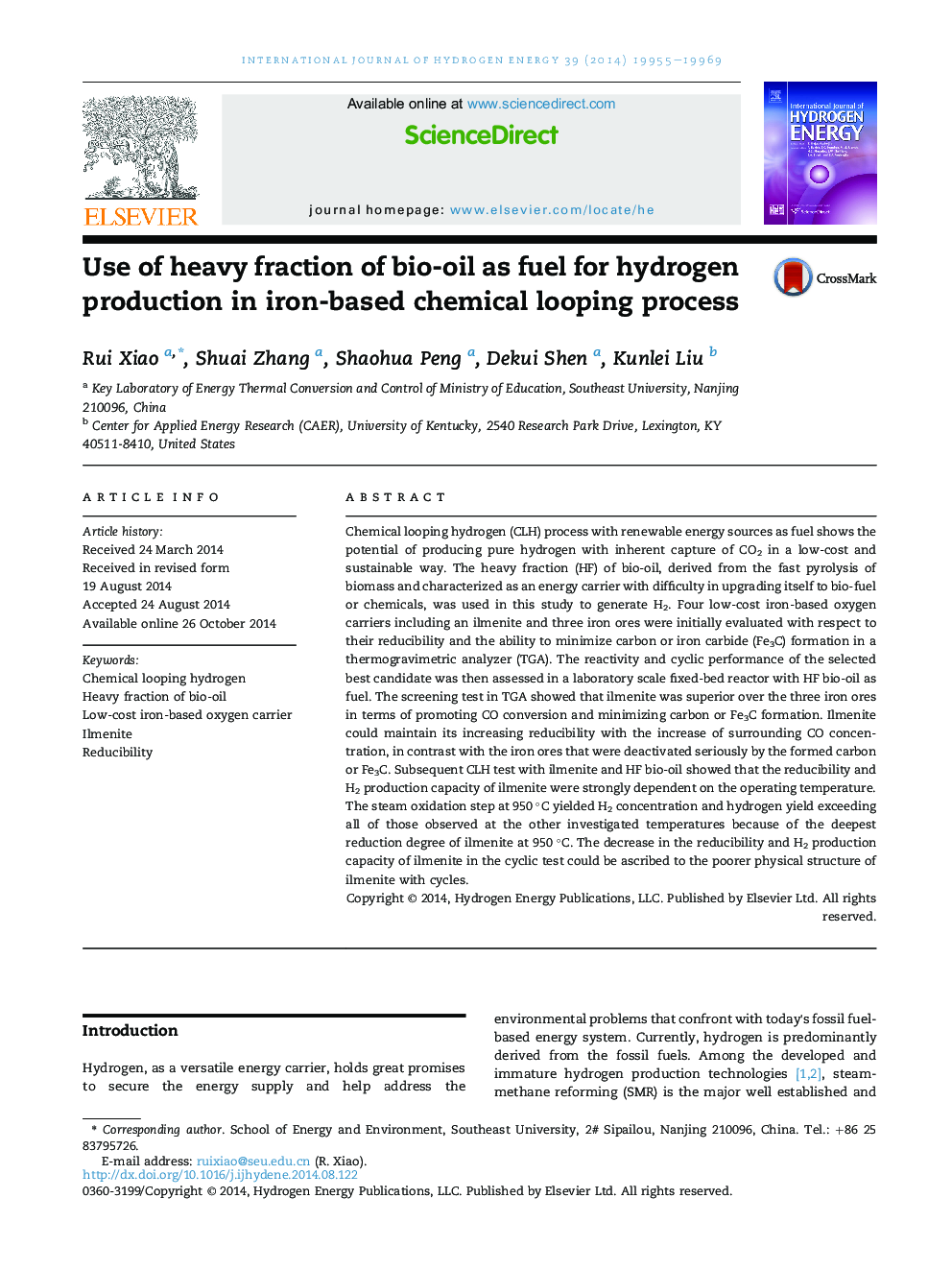| Article ID | Journal | Published Year | Pages | File Type |
|---|---|---|---|---|
| 7717261 | International Journal of Hydrogen Energy | 2014 | 15 Pages |
Abstract
Chemical looping hydrogen (CLH) process with renewable energy sources as fuel shows the potential of producing pure hydrogen with inherent capture of CO2 in a low-cost and sustainable way. The heavy fraction (HF) of bio-oil, derived from the fast pyrolysis of biomass and characterized as an energy carrier with difficulty in upgrading itself to bio-fuel or chemicals, was used in this study to generate H2. Four low-cost iron-based oxygen carriers including an ilmenite and three iron ores were initially evaluated with respect to their reducibility and the ability to minimize carbon or iron carbide (Fe3C) formation in a thermogravimetric analyzer (TGA). The reactivity and cyclic performance of the selected best candidate was then assessed in a laboratory scale fixed-bed reactor with HF bio-oil as fuel. The screening test in TGA showed that ilmenite was superior over the three iron ores in terms of promoting CO conversion and minimizing carbon or Fe3C formation. Ilmenite could maintain its increasing reducibility with the increase of surrounding CO concentration, in contrast with the iron ores that were deactivated seriously by the formed carbon or Fe3C. Subsequent CLH test with ilmenite and HF bio-oil showed that the reducibility and H2 production capacity of ilmenite were strongly dependent on the operating temperature. The steam oxidation step at 950 °C yielded H2 concentration and hydrogen yield exceeding all of those observed at the other investigated temperatures because of the deepest reduction degree of ilmenite at 950 °C. The decrease in the reducibility and H2 production capacity of ilmenite in the cyclic test could be ascribed to the poorer physical structure of ilmenite with cycles.
Keywords
Related Topics
Physical Sciences and Engineering
Chemistry
Electrochemistry
Authors
Rui Xiao, Shuai Zhang, Shaohua Peng, Dekui Shen, Kunlei Liu,
